The Utah Division of Water Quality held two Conservation Action Planning (CAP) workshops in March and May 2018 to work on the development of water quality standards for Great Salt Lake wetlands. CAP workshops were held to get input from local experts on the important ecological attributes of Utah’s wetlands, threats to those wetlands, and potential conservation strategies. The knowledge gathered in these meetings will be combined with research on existing wetland water quality standards in order to developing an appropriate beneficial use and narrative water quality standard to protect the wetlands around Great Salt Lake.
Conservation Action Planning
Conservation Action Planning (CAP) is straightforward and proven approach for planning, implementing and measuring success for large landscapes or other conservation projects. CAP is science-based, strategic and collaborative, and has been applied at over 1,000 conservation projects, including the Bear River. The process has been developed by The Nature Conservancy and is conducted by professional facilitators. Meeting outcomes include the definition of:
- Targets
- Key Ecological Attributes
- Indicators and Ratings
- Stresses and Sources
- Conservation Strategies
GSL Wetland Water Quality Standards Workshops (2018)
The 2018 Great Salt Lake Wetland CAP workshops built on the knowledge generated from previous CAP’s around GSL (see GSL Health Assessment, 2015 Wetland CAP, and Willard Spur CAP reports below).
- Three wetland Targets are found around GSL: deeply flooded impounded wetlands, fringe wetlands that are dominated by emergent vegetation, and sparsely vegetated playa/mudflats. The wetland-dependent bird guilds that utilize each Target (waterfowl, shorebirds, and waterbirds) are Nested Targets, which depend on the health of wetland targets.
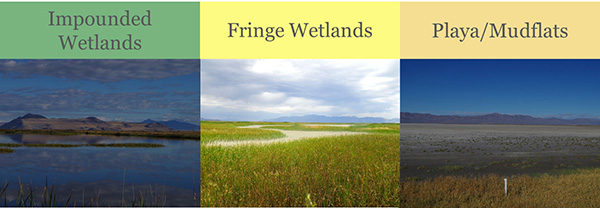
- Participants amended and added Key Ecological Attributes (KEA’s) of each target. KEA’s included features of each wetland target that help support nested bird targets, including hydrologic regime, chemical and nutrient regimes, invasive species, macroinvertebrate and plant communities, and wetland size.
- Once KEA’s and their Indicators (the descriptions for what each KEA looks like in good and poor condition) were established, participants then ranked the health of each target’s health from poor to very good. Most GSL wetland targets are in fair to good condition, though the hydrologic regime and plant communities of some targets received poor health rankings. Voting on the biggest stresses and sources of stress to GSL wetland targets showed that water availability and invasive Phragmites were the biggest threats to GSL wetlands. Participants worked in groups to come up with conservation strategies for addressing threats to water supply and Phragmites. A third group discussed issues of wetland size, as the dynamic nature of GSL (which expands and contracts according to water availability) and wetland targets (which shift according to the size of GSL) made determining KEAs, Indicators, and Stresses complicated.
- Voting on the biggest stresses and sources of stress to GSL wetland targets showed that water availability and invasive Phragmites were the biggest threats to GSL wetlands. Participants worked in groups to come up with conservation strategies for addressing threats to water supply and Phragmites. A third group discussed issues of wetland size, as the dynamic nature of GSL (which expands and contracts according to water availability) and wetland targets (which shift according to the size of GSL) made determining KEAs, Indicators, and Stresses complicated.
GSL Wetland CAP Workshop I
The first GSL Wetland CAP workshop focused on refining target descriptions, KEA’s, and indicators. Meeting handouts can be found here: GSL Wetlands CAP I Background Presentation.
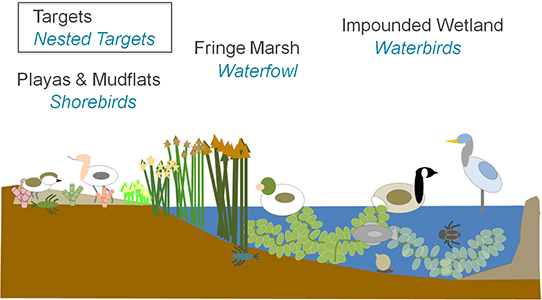
A summary report of the first meeting’s findings can be read here: GSL Wetland CAP Workshop I Summary
GSL Wetland CAP Workshop II
The second GSL Wetland CAP workshop reviewed the decisions from the first meeting, the ranked the health of targets, voted on the stresses to targets, and developed strategies to address threats. Meeting handouts can be found here: UDWQ Wetland Regulatory Authority
CAP workshop participants developed key ecological indicators for three wetland classes, defined in the table below.
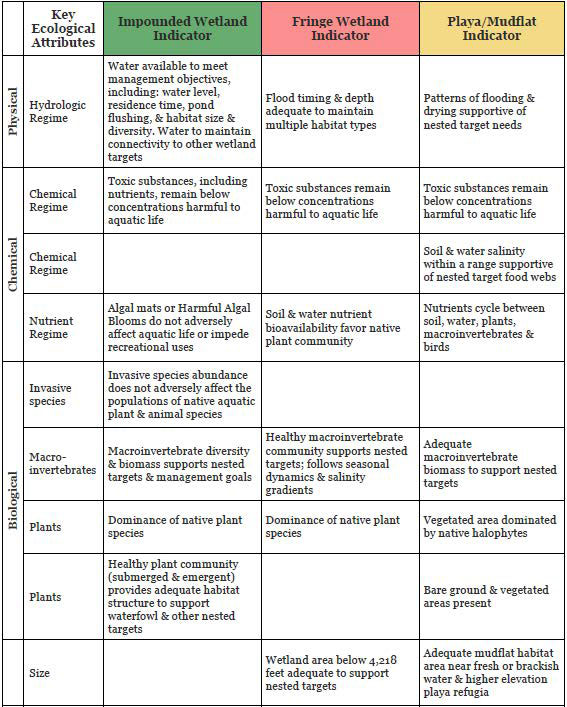
Following agreement on a list of KEA’s, the indicators were ranked from good to poor condition based on available data and participant observations. Participants then voted on the threats to GSL wetlands, which are summarized in the table below. Altered hydrology and invasive species were the two biggest threats to the health of GSL wetlands.
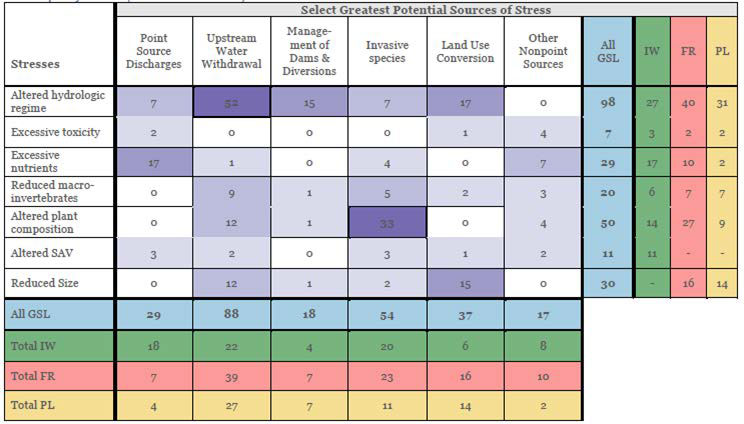
The final report on the GSL Wetland CAP (2018) workshops can be read here: GSL Wetland Water Quality Standards CAP Workshops Report. (1 MB)
Great Salt Lake CAP Processes
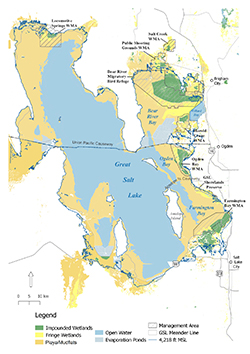
CAP has been used previously around Great Salt Lake to develop a lake-wide health assessment, initial description of Great Salt Lake wetland attributes, and to tackle conservation of Willard Spur.
- Full Report (2012)
- GSL Wetland CAP (2015)
- Willard Spur Water Quality Standards Workshop (2018)
More on how CAP works
- Conservation Action Planning Explanation (2018)
- Landscape-Scale Conservation Practitioners Handbook (2003)
- Are We Conserving What We Say We Are (Bioscience 2003)

